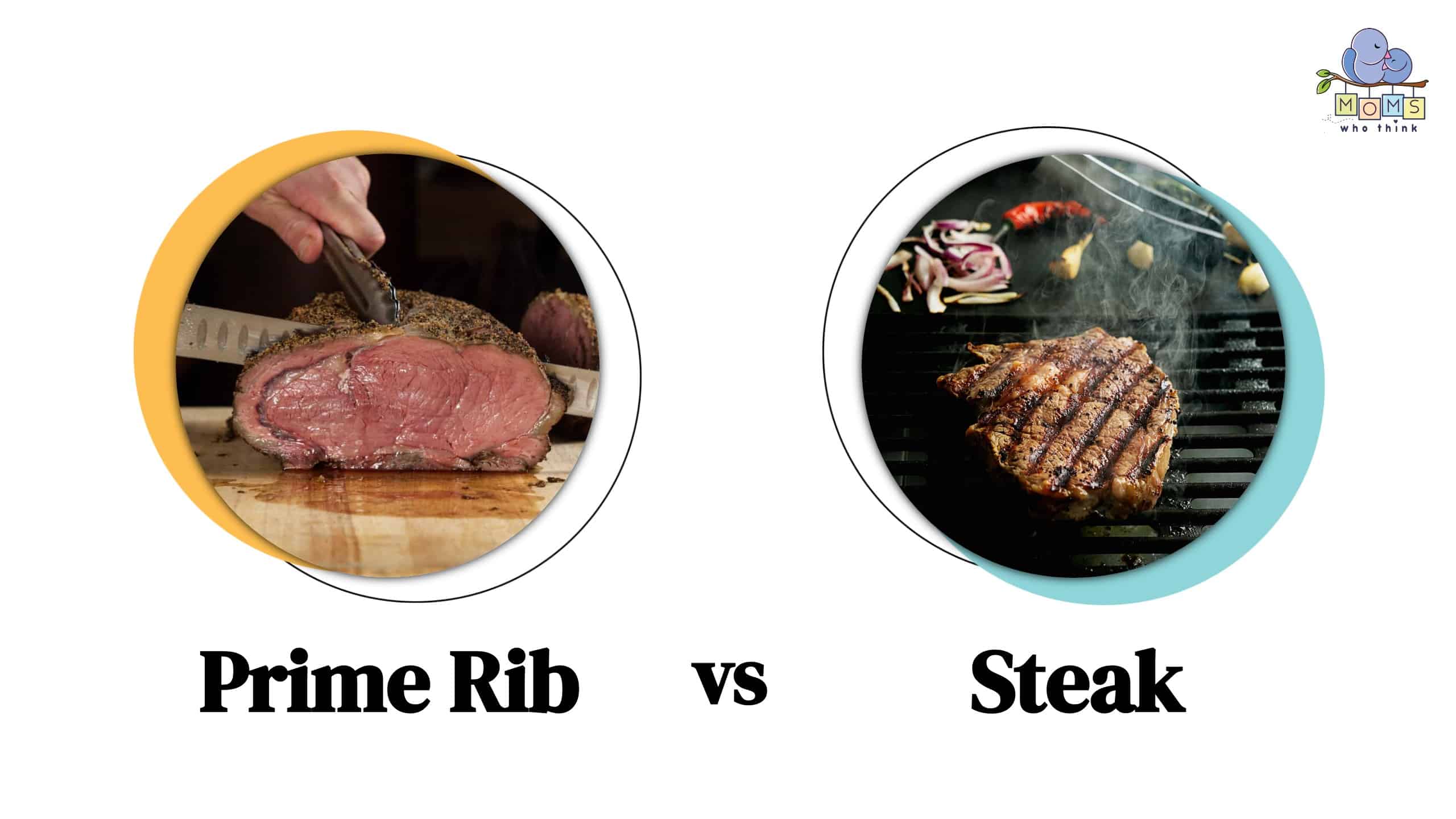Are you looking for a delicious recipe to feed your family? Of course, as parents, we always look for perfect dining options that will feed many people and are good on our wallets. But, sometimes, it can feel overwhelming with all the wide varieties of meat on the market. This post will discuss the difference between prime rib and steak.
Prime Rib vs. Steak What's the Difference?
Prime rib and ribeye steak both come from the same section of beef, the rib area. However, there are key differences in their preparation and presentation. Prime rib is a large, bone-in roast that is typically slow-cooked to retain its tenderness and juiciness, while ribeye steak is a boneless, individual cut of meat that is trimmed and cooked to your desired level of doneness. In essence, prime rib is a succulent, flavorful roast served in thick slices, whereas ribeye steak is a tender, marbled piece of beef cooked to your preference and served as a single portion.
Let's dive into more details below.
What is Prime Rib?
A prime rib is a large cut of beef. It is in the primal rib section. The rib section has 13 ribs, and the prime rib is cut from the bottom half of those rib cages. So, a prime rib will have at least six ribs and can be up to 12 pounds.
A prime rib has a large eye in the center and is very juicy and tender. Therefore, it is one of the most sought-after pieces of beef on the market. That is because it is tender and succulent. Also, it is marbled with fats and typically has a thick layer of fat around it. The more marbled a piece of beef is, the more fat content there is. The more fat content there is, the more tender your beef will be. That is why the prime rib is one of the most tender pieces of meat because it comes from the middle section of a rib cage, surrounded by layers of fat.
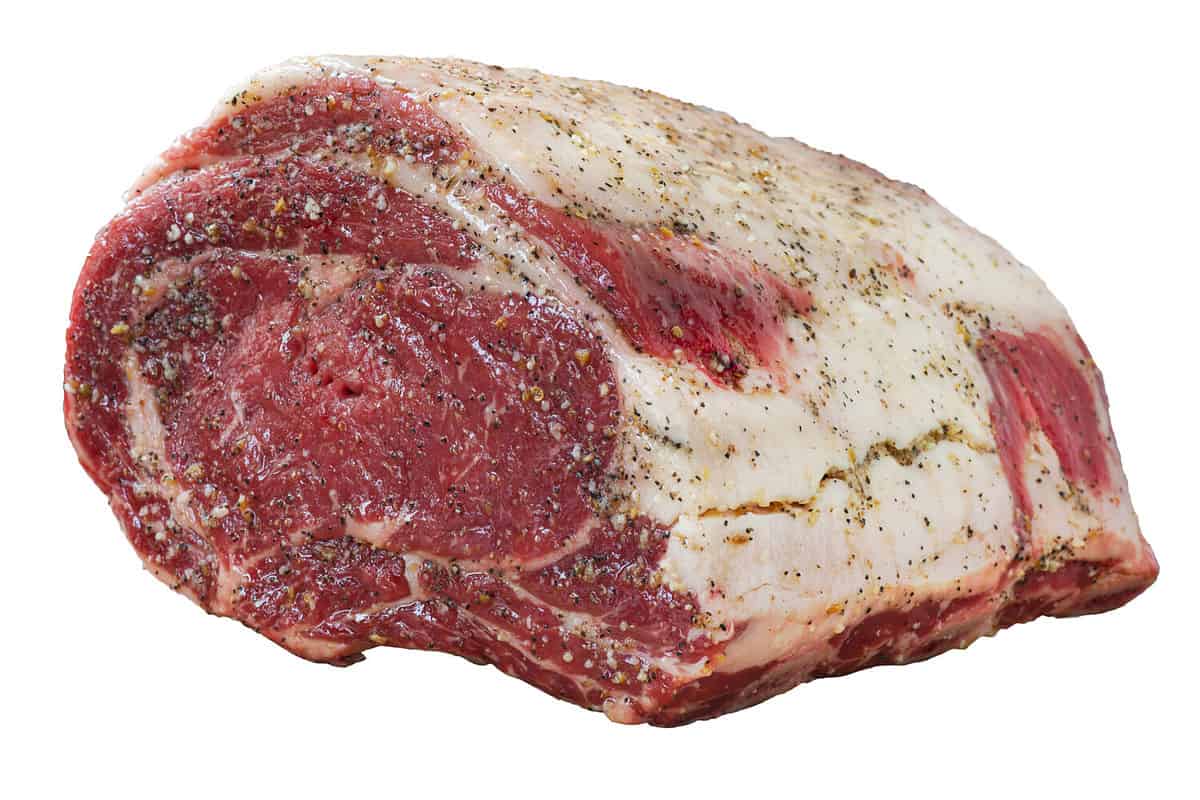
Prime rib can be roasted slowly, producing a delicious, mouthwatering beefy taste that goes well with many different sides!
©Toasted Pictures/Shutterstock.com
What is Steak?
But wait, what exactly is a steak, then? Steak is an all-encompassing term that means it is a cut of meat that comes from a muscle. Steak is an umbrella term because there are so many different muscles inside an animal, and a steak comes from many different places.
Here are a few of the most popular steaks on the market today:
- Ribeye steak: comes from around the ribs of a cow.
- Strip steak: comes from the short loin of a cow.
- Tenderloin steak: comes from the muscle between the hip and spine, the major psoas muscle.
- Sirloin steak: comes from the lower back of a cow.
These are just a few of the steaks available today. Experimenting with different cuts to find your favorite can be fun and important for steak lovers. Each one comes with varying degrees of flavor, tenderness, and juiciness. You can also cook a steak to varying degrees of doneness. From rare, which means there's quite a bit of redness inside the cuts that produce a juicy and tender taste. To well done, which means there is no redness inside the steak. How you eat your steak is all about personal preference.
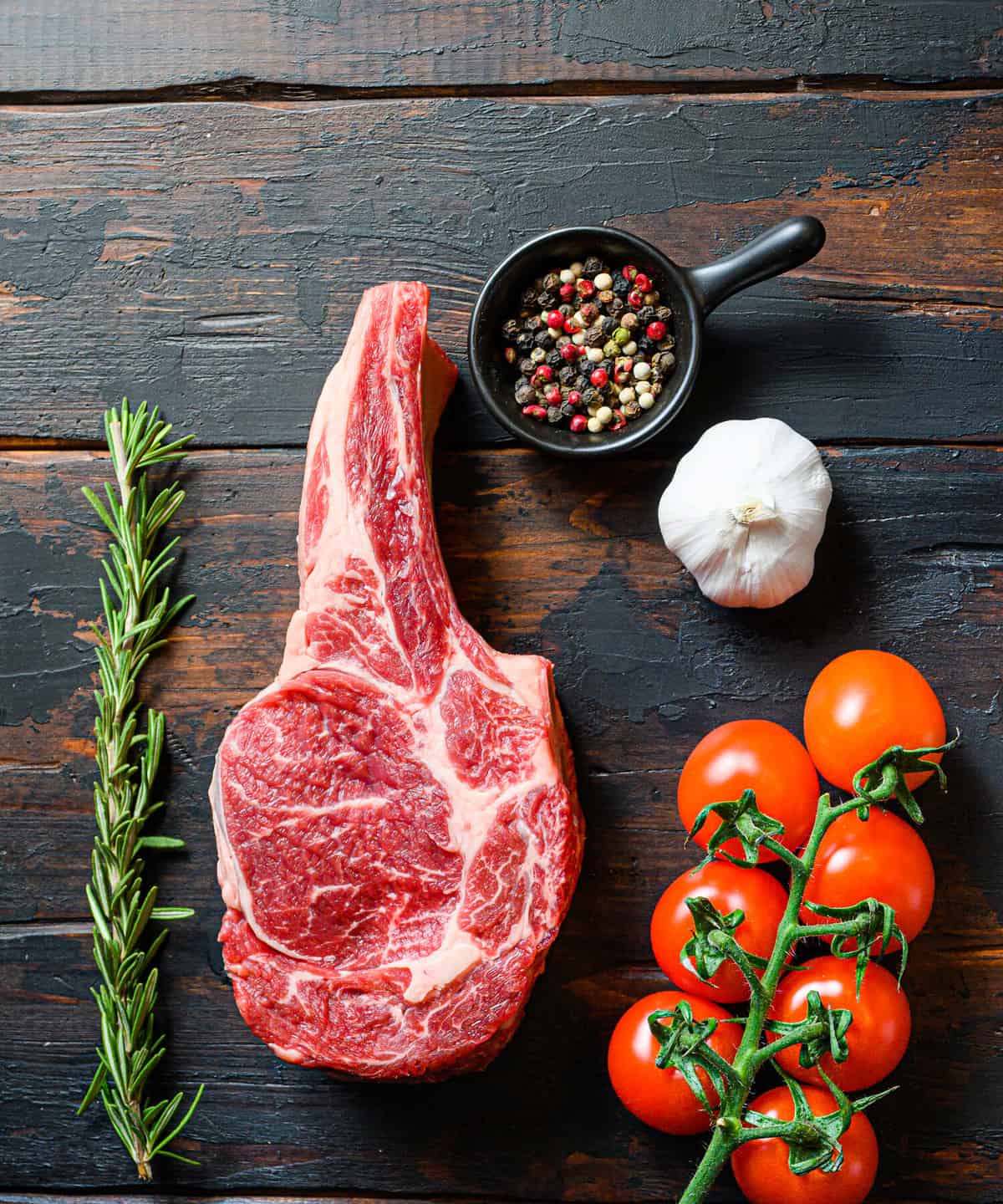
There are various cuts of steak available on the market today. Experimenting to find your favorite can be fun.
©Chatham172/Shutterstock.com
What Are the Main Differences Between Prime Rib and Steak?
So, what exactly is the difference between prime rib and steak? Prime rib is not considered a steak. That is the main difference. Prime rib comes from a cow's rib and more closely resembles a roast. It can cook differently than steak as well. Prime rib also comes from a separate place on the animal. The steak comes from a muscle, and the prime rib comes from the middle of the ribs.
How to Cook Prime Rib
Prime rib can be seasoned generously because it is a large cut of meat. You can cook it with or without the bone attached, but most people enjoy it with the bone. Roasting is a delicious way to enjoy prime rib. Roasting produces a tenderized flavor because the cut of meat is marinating in its juices; grilling is another favorite way to enjoy prime rib for many. Prime rib is best when it's rare to medium well done because cooking it too well can sometimes produce a chewy taste that can feel like chewing leather.
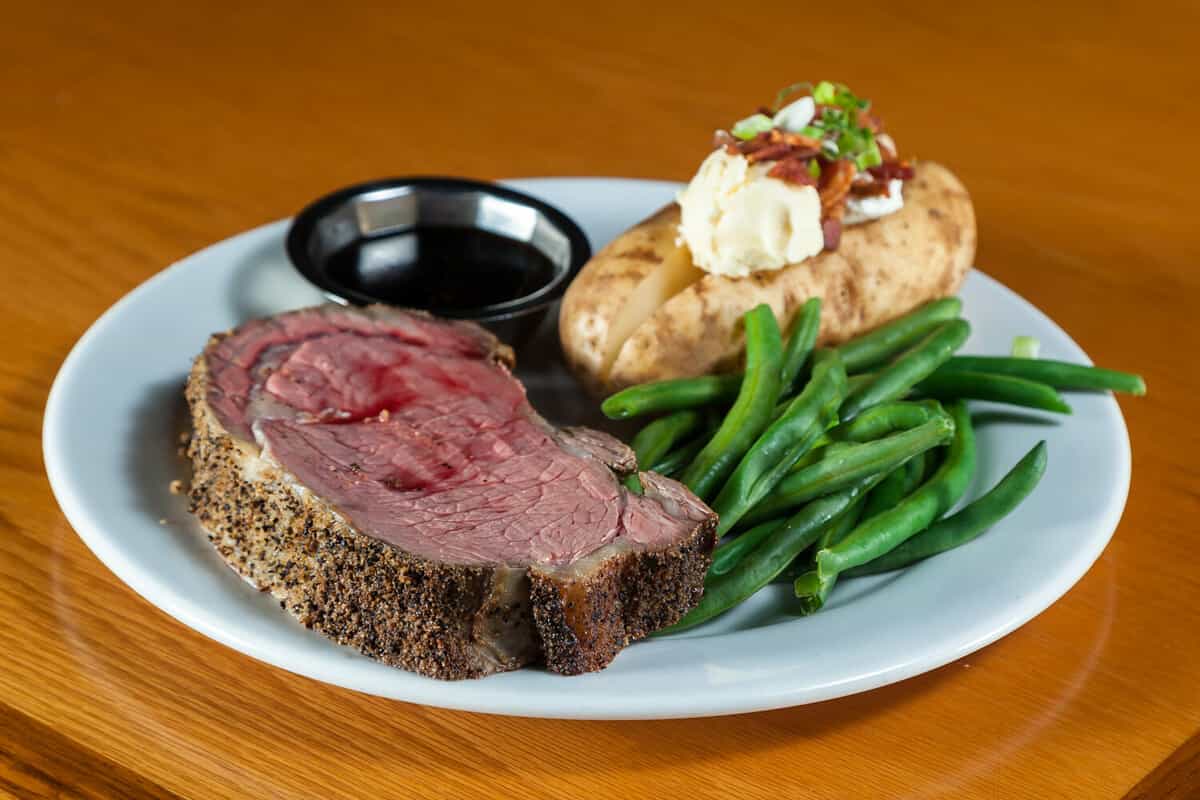
Prime rib is excellent when cooked to medium doneness. It traps the juices and leaves you with a tender and delicious beefy flavor.
©Nature's Charm/Shutterstock.com
How to Cook Steak
How you cook steak depends upon which cut of meat you have. However, the favorite ways people enjoy cooking steak is by grilling it, roasting it, or even pan-frying it. You can cook it to varying degrees of doneness.
There are several different cuts of steak available on the market today. Here are a few that are enjoyed by many:
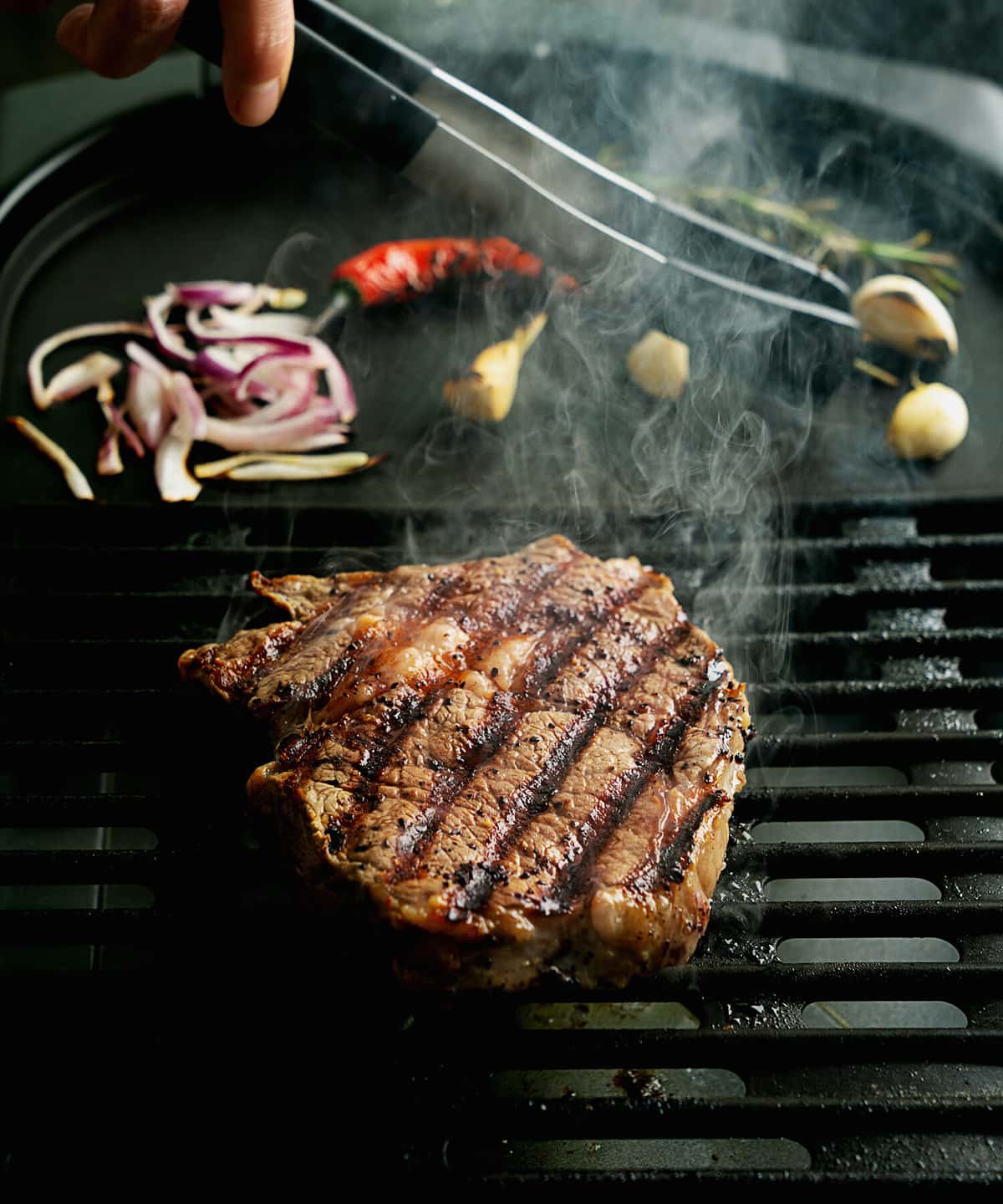
Steaks can be prepared in many different ways. However, the method of grilling is a favorite among steak lovers.
©Pedal to the Stock/Shutterstock.com
Are There Any Tenderness Differences Between the Two?
Yes, the short answer is there are differences between tenderness among these two cuts of beef. Prime rib contains high-fat content meaning there's a lot of marbling typically, and the more marbling the prime rib has, the more fat content has. The more fat content a prime rib has, the more tender it will be after cooking. As a result, prime rib typically produces a succulent and tender flavor. However, steak varies and has tenderness, depending on how you cook it and which type of cut you choose. Both prime rib and steak have a beefy and rich flavor that is hard to resist for meat lovers.
Appearance and Characteristic Differences
What are the appearance and characteristic differences? For starters, the prime rib has an eye bone in the middle. The eye bone is a telling characteristic of the prime rib. It also has a layer of fat around it because of the location in the animal. As a result, prime rib looks more like a roast, and it can also feed more people than steak, making it a better option on your wallet if you have a lot of people to feed.
The appearance and characteristics of steak vary depending on the cut and cooking methods. It also typically feeds fewer people, making it a more expensive option for a large family or gathering.
Should You Choose Prime Rib or Steak?
Whether not you choose prime rib or steak will depend on personal preference. A steak is a fantastic option if you're looking for a quick meal that can go great with many different sides, including vegetables or mashed potatoes.
On the other hand, prime rib is excellent as a roast and typically takes longer to cook. How many people are you feeding? How much time do you have to cook? These are deciding factors for which one you should choose. But the consensus is that you cannot go wrong with either one of these cuts of beef. They both have a fantastic beefy rich flavor.
One Final Note
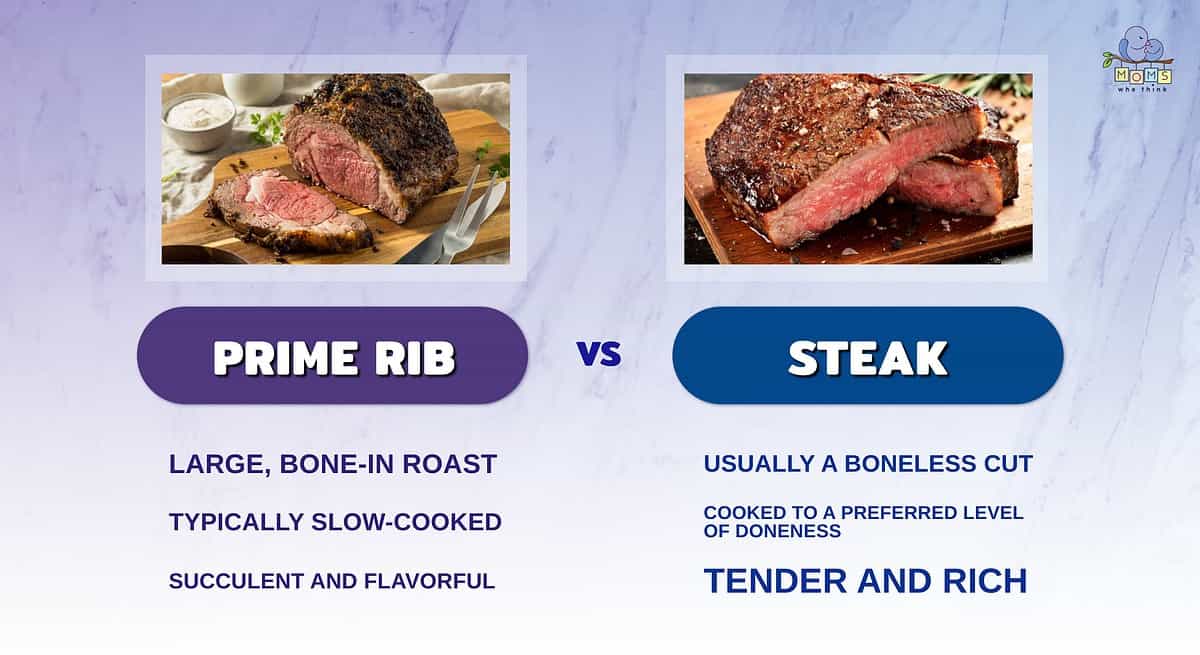
- Prime rib is a large, bone-in roast. Steaks can be large and can be bone-in, but are generally smaller, boneless cuts of beef.
- Because of its size, prime rib is often slow-cooked. Meanwhile, steaks are cooked to a preferred level of doneness, from rare to well-done.
- Prime rib has a succulent and flavorful taste, while steaks tend to be tender and rich in flavor.
Prime rib and steak are excellent dinner options for people who love meats. There are many different ways to cook steak and different degrees of doneness. Steak is versatile and can be cooked to different degrees, allowing many people to enjoy it. A prime rib is an excellent option for a large family because it can feed more people. Whatever you decide, your dinner will be top-notch with either of these options.
Prime Rib Recipe
PrintPrime Rib Recipe
Ingredients
1 (4 to 5 pound) prime rib roast
1/3 cup olive oil
2 Tablespoons lemon juice
4 garlic cloves, minced
3 Tablespoons rosemary leaves
1 teaspoon pepper
Instructions
1. Place the roast in a shallow roasting pan and set aside 30 minutes to room temperature. Preheat oven to 450 degrees F.
2. Combine all other ingredients. Rub the prime rib with mixture. Bake 15 minutes until the meat begins to brown.
3. Reduce heat to 325 degrees F and continue cooking according to the chart below
Cooking Time for Rare (120°) 3 Ribs, 7 to 8 lbs. 15 minutes at 450°, Then 1 ¼ to 1 ½ hours at 325° |
4. Every half hour or so, baste the ends of the roast with the drippings. Use the meat thermometer about 30 minutes before the end of the roasting time. Make sure to insert it in the thickest part of the meat, not touching the fat or bone.
When the internal temperature reaches 120°, remove roast from the oven and cover with foil. If you remove a prime rib from the oven when the temperature is over 125°, it will be way too dry and overdone.
5. Let the roast sit for twenty to thirty minutes. It will continue to cook during this time, reaching a temperature of about 125° to 130°. This resting period allows the juices and flavors to permeate the roast.
Steak Recipes
The image featured at the top of this post is ©/Shutterstock.com
